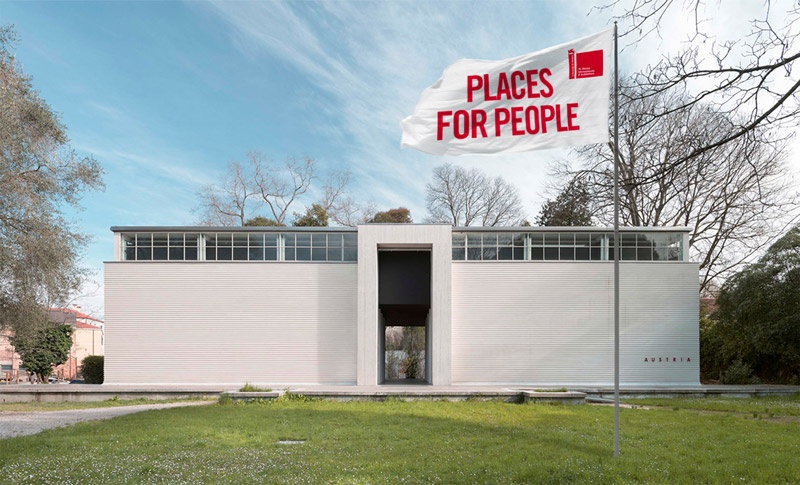Eröffnung Österreichischer Pavillon
Österreichischer Beitrag für die 15. Architekturbiennale Venedig 2016
28. Mai – 27. November 2016
Venedig, Vienna
Elke Meissl (Kommissärin) und Liquid Frontiers (Ko-Kuratoren)
the next ENTERprise - architects
Delugan Meissl Associated Architects
Paul Kranzler
In the light of the humanitarian crisis which was highlighted by the movement of refugees towards Europe in the Summer of 2015 and which also had a significant impact in Austria, the budgetary resources, prestige and media attention of the world’s most important architecture exhibition and the know-how of three Austrian architectural and design teams were employed to develop and implement approaches which were both concrete and innovative as a means of providing temporary accommodation and ongoing integration to people who had fled to Vienna.
The aim was to create humane and dignified living space in three empty properties in three different locations in Vienna in line with three different concepts which would, at the same time, act as a very public and international reality check of architecture’s claim to be responsible for addressing social issues.
As a result of its title and methodical approach “Places for People” also sees itself as a reference to two architectural and design visionaries with Austrian roots Bernard Rudofsky and Victor Papanek, both of whom were – each in his own way – early pioneers of a socially-oriented and less object-fixated design philosophy.
The development of the three Interventions was documented by the Austrian photographer Paul Kranzler over a period of almost five months in the form of a self-contained visual essay. A selection of large-format photographs which portray the places and the people as well as the diverse interactions between the architects and users, designers and residents was on display in the main space of the Austrian Pavilion in Venice. In keeping with Heimo Zobernig’s installation for the 2015 Art Biennale Delugan-Meissl Associated Architects developed a simple, three-part, table-based display ensemble positioned in the external space in front of the pavilion, the main space and the half-open atrium to its rear which provided both a means of displaying the exhibition and a place of social meeting and interaction.
A further key element of the presentation in the Austrian Pavilion was the comprehensive, free newspaper which contains all the necessary information about the three interventions, reports about their creation, essays covering the entire breadth of the subject and interviews with actors from 14 further innovative projects in this area in Austria.

The Austrian Pavilion in the Giardini della Biennale, Venice